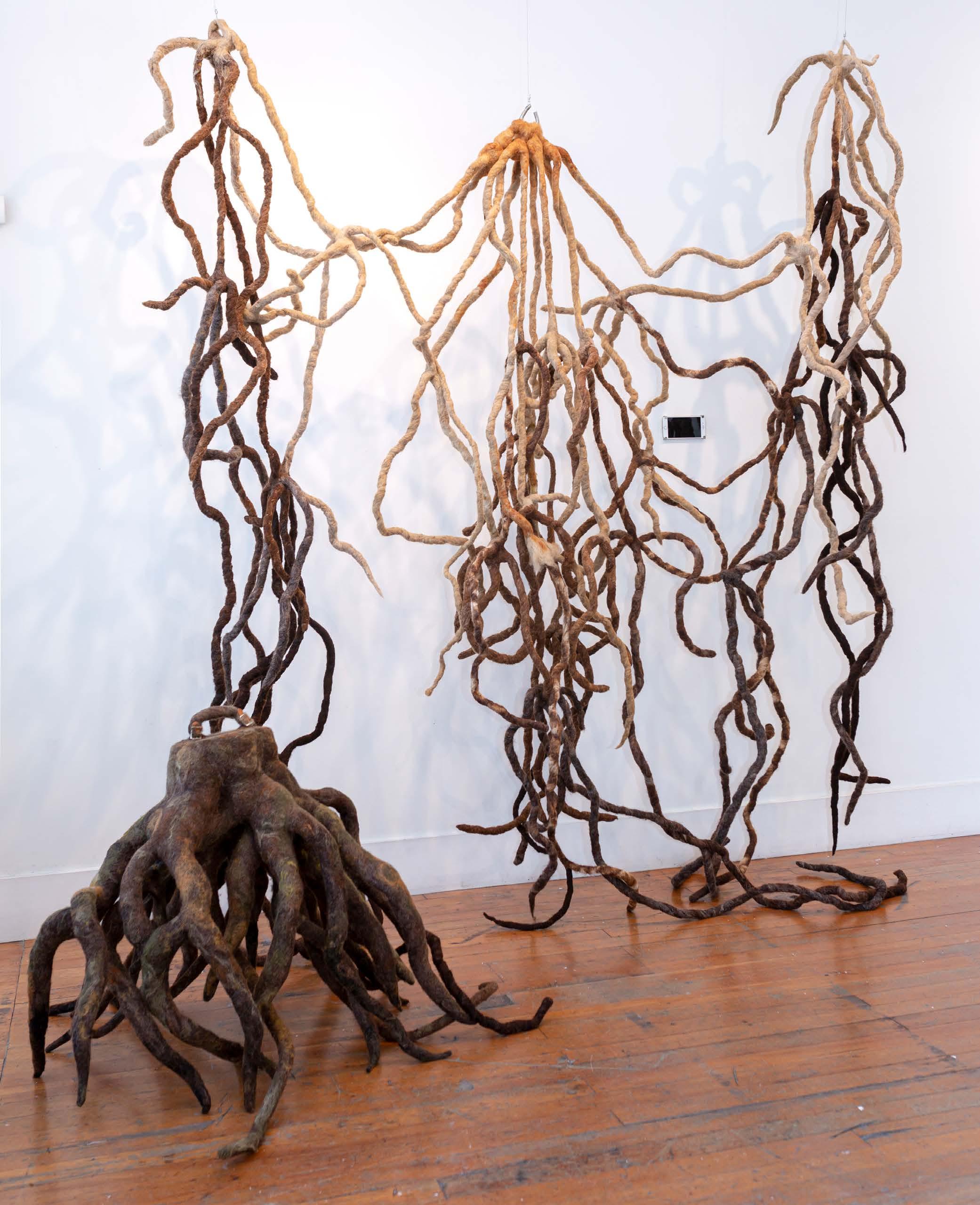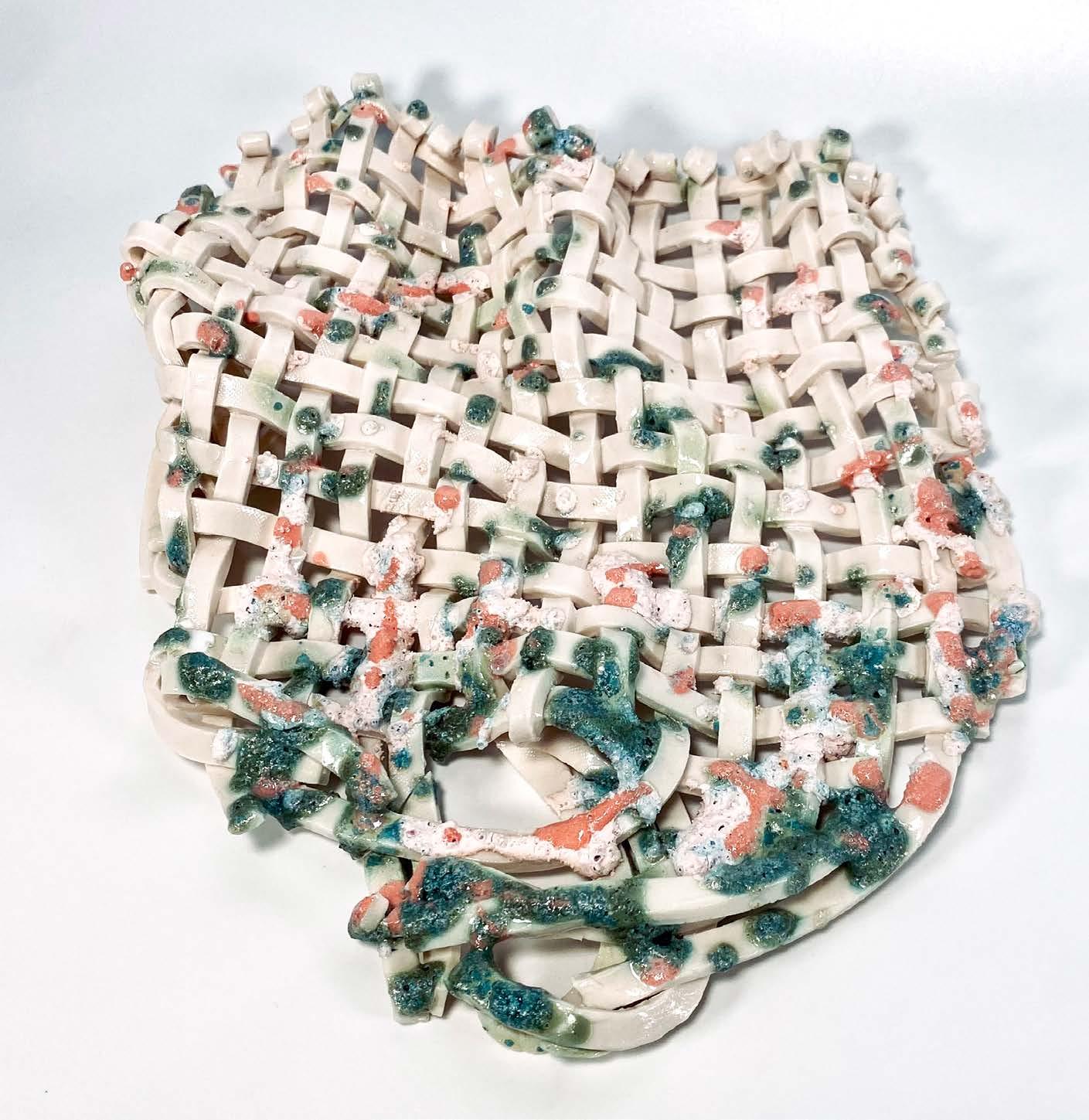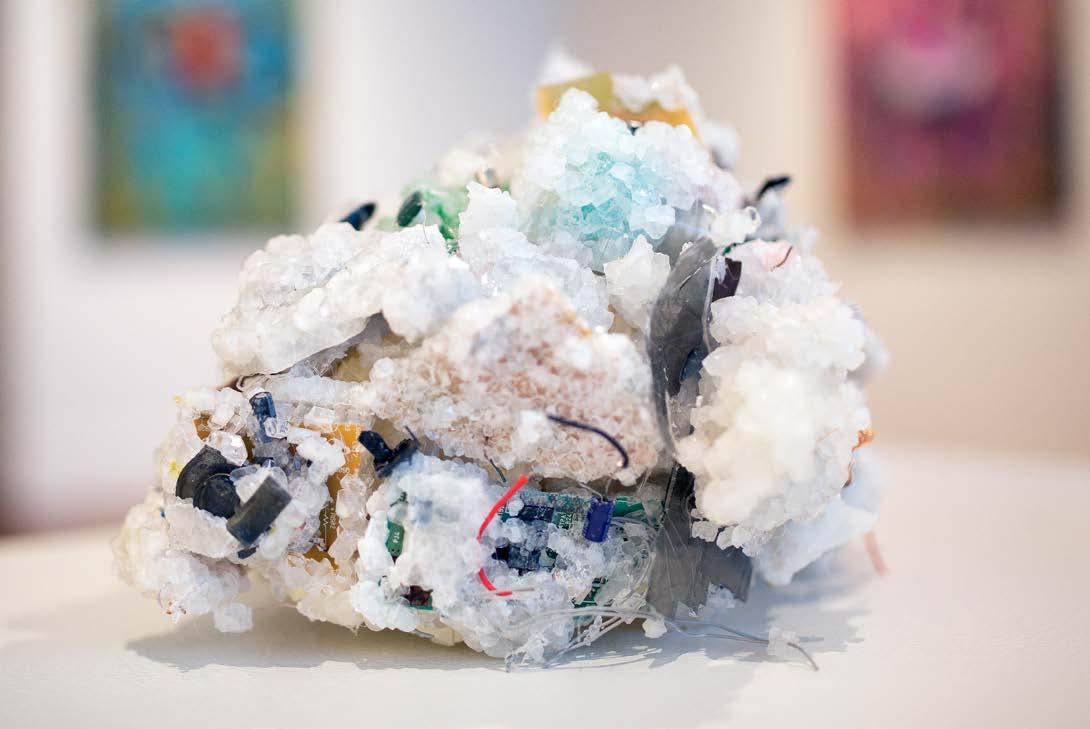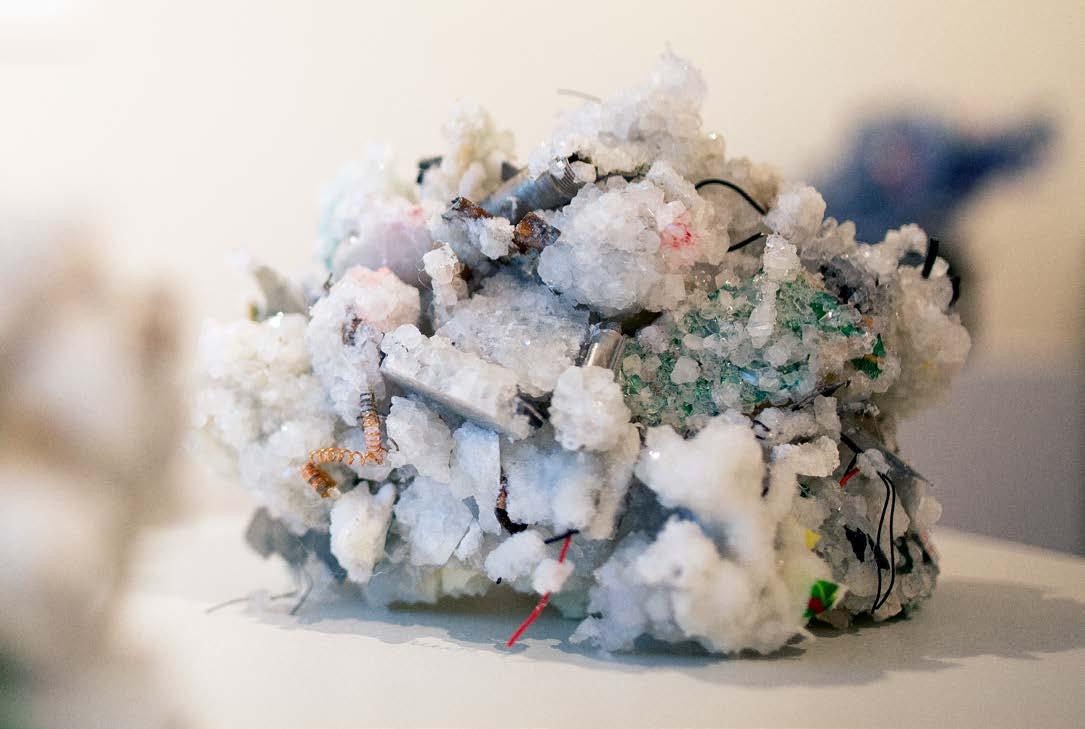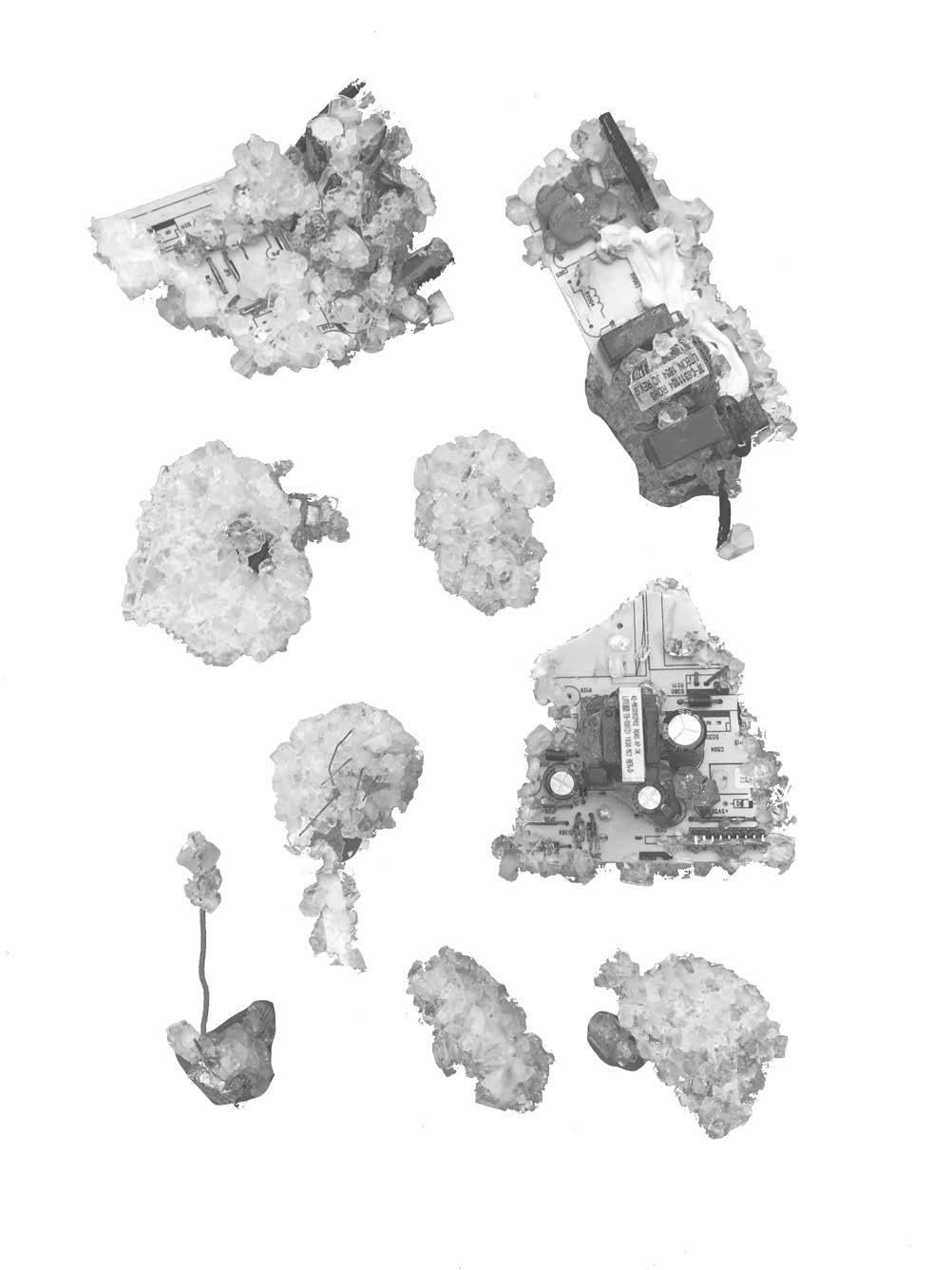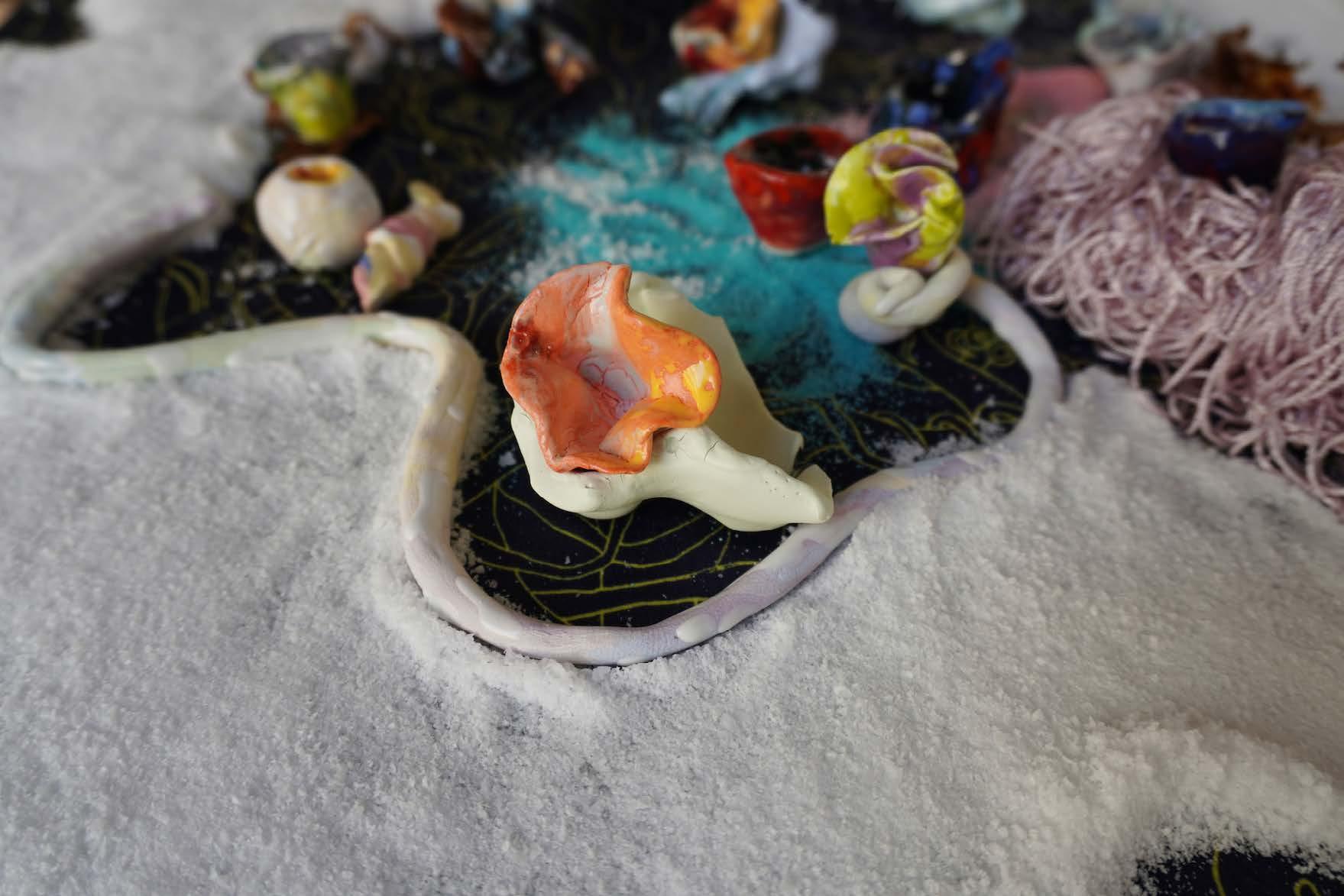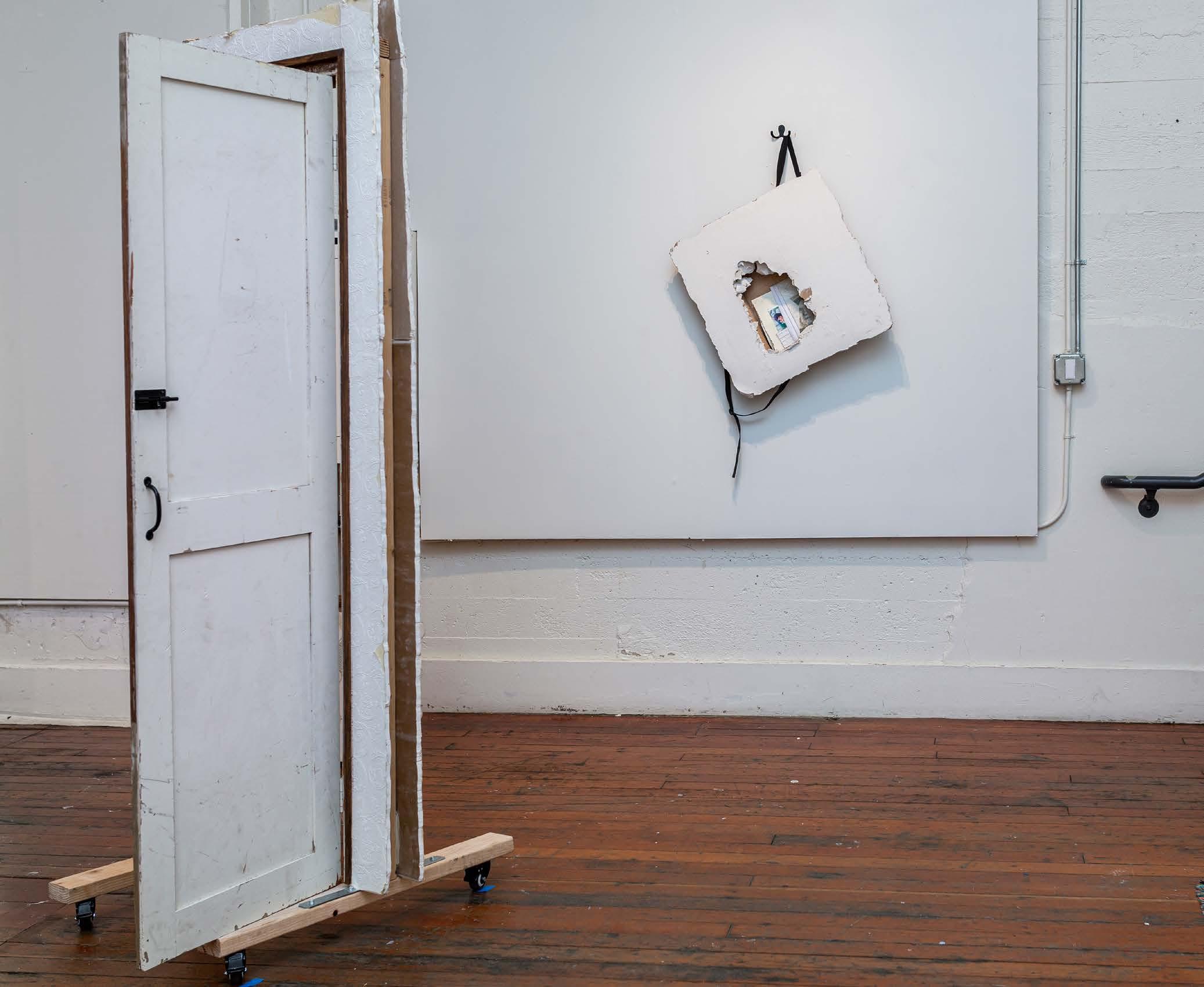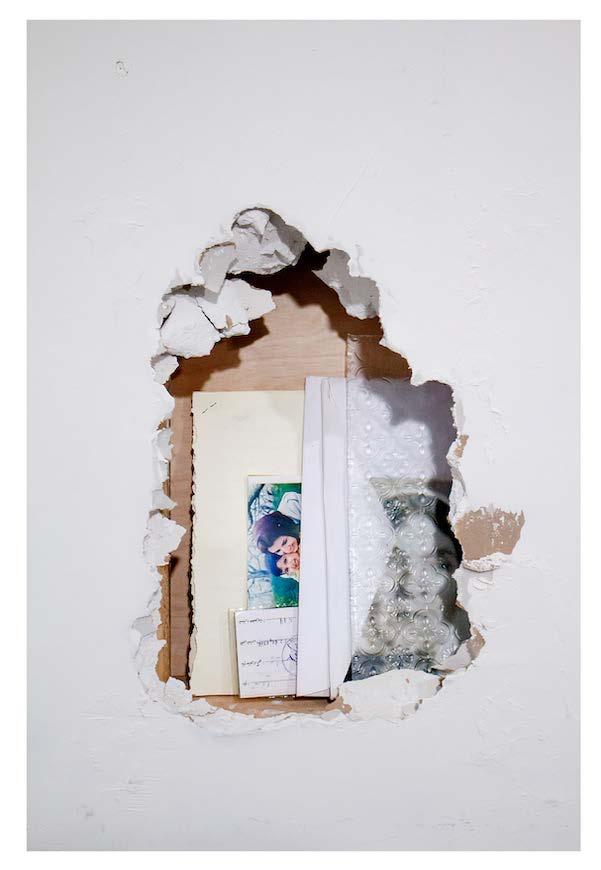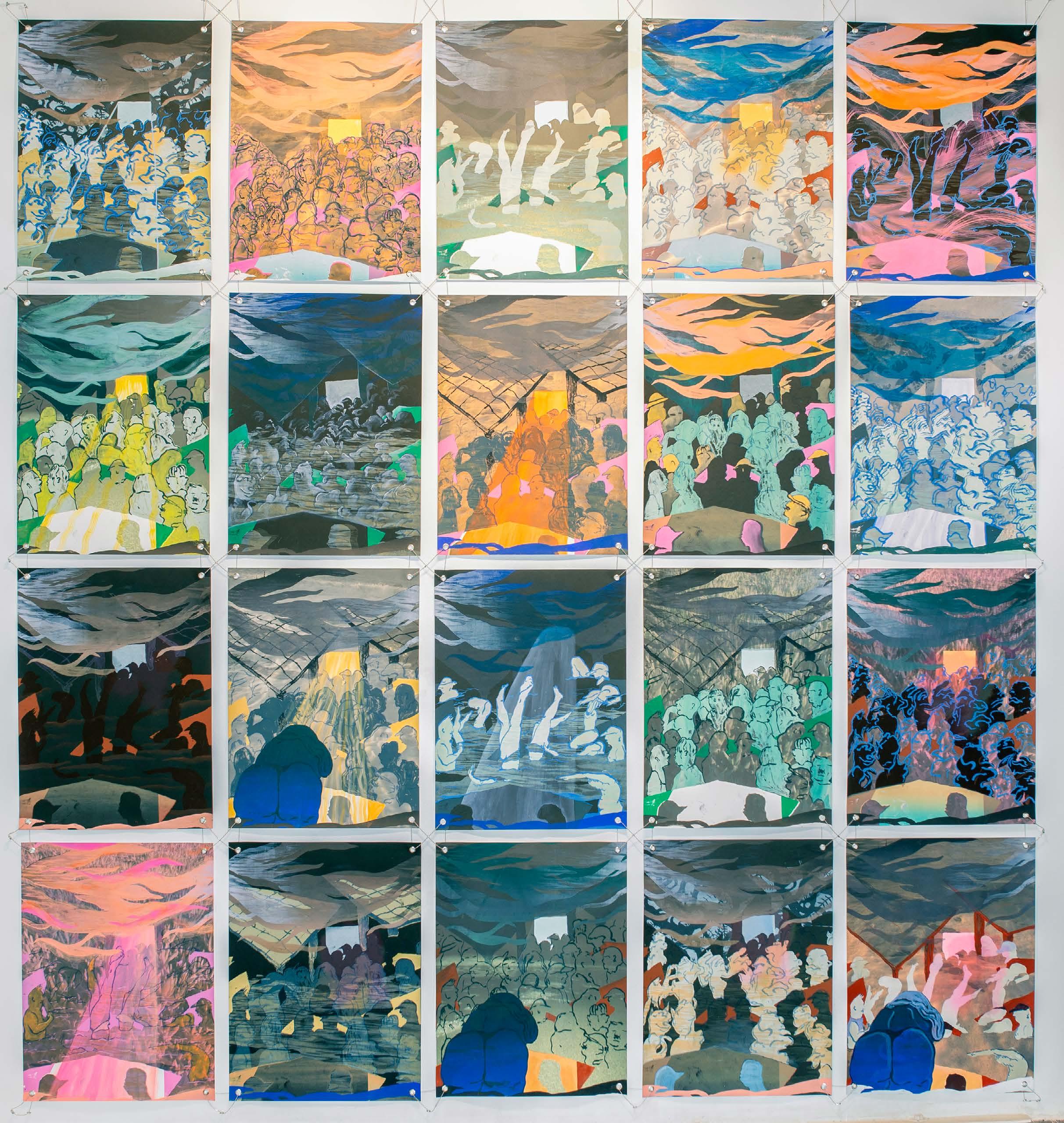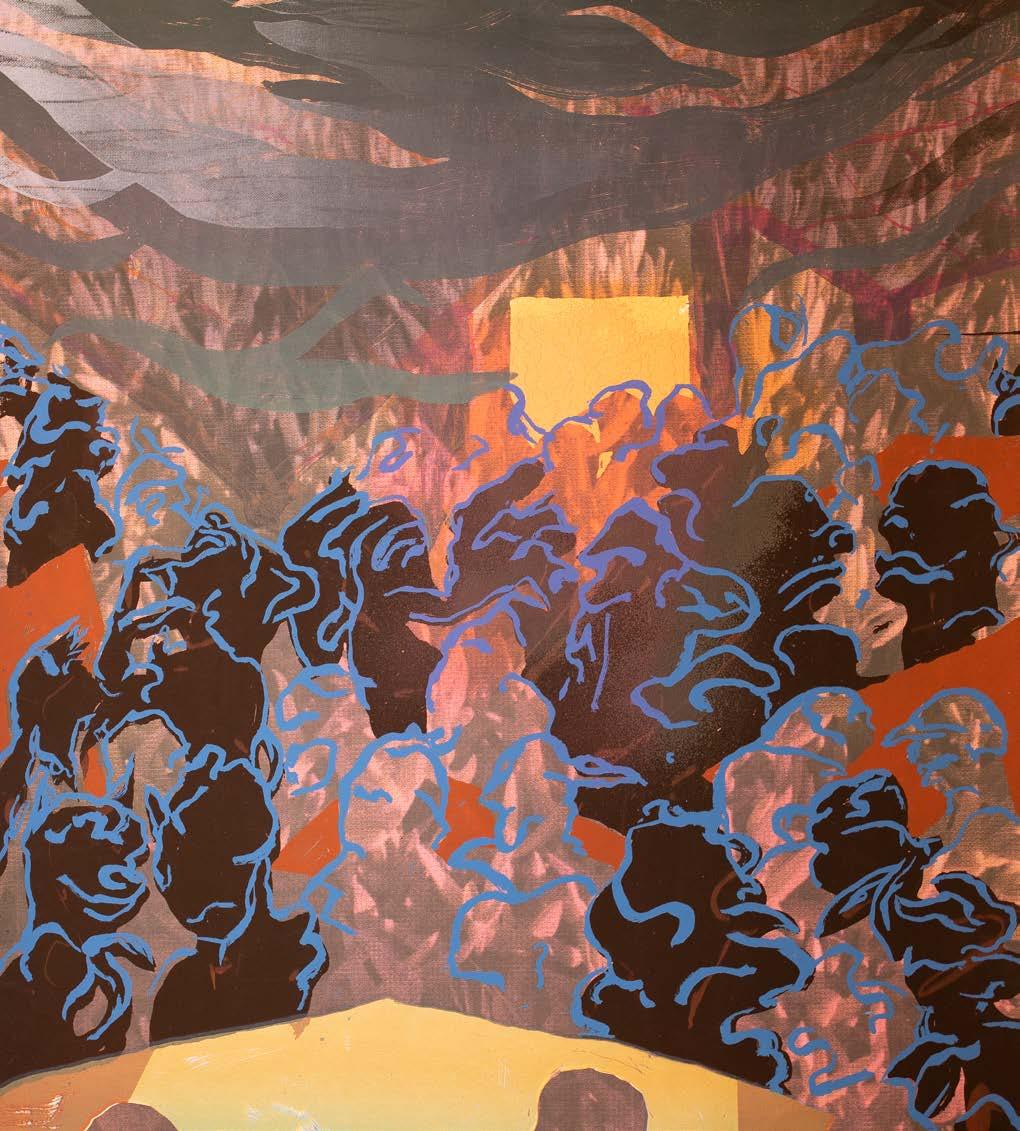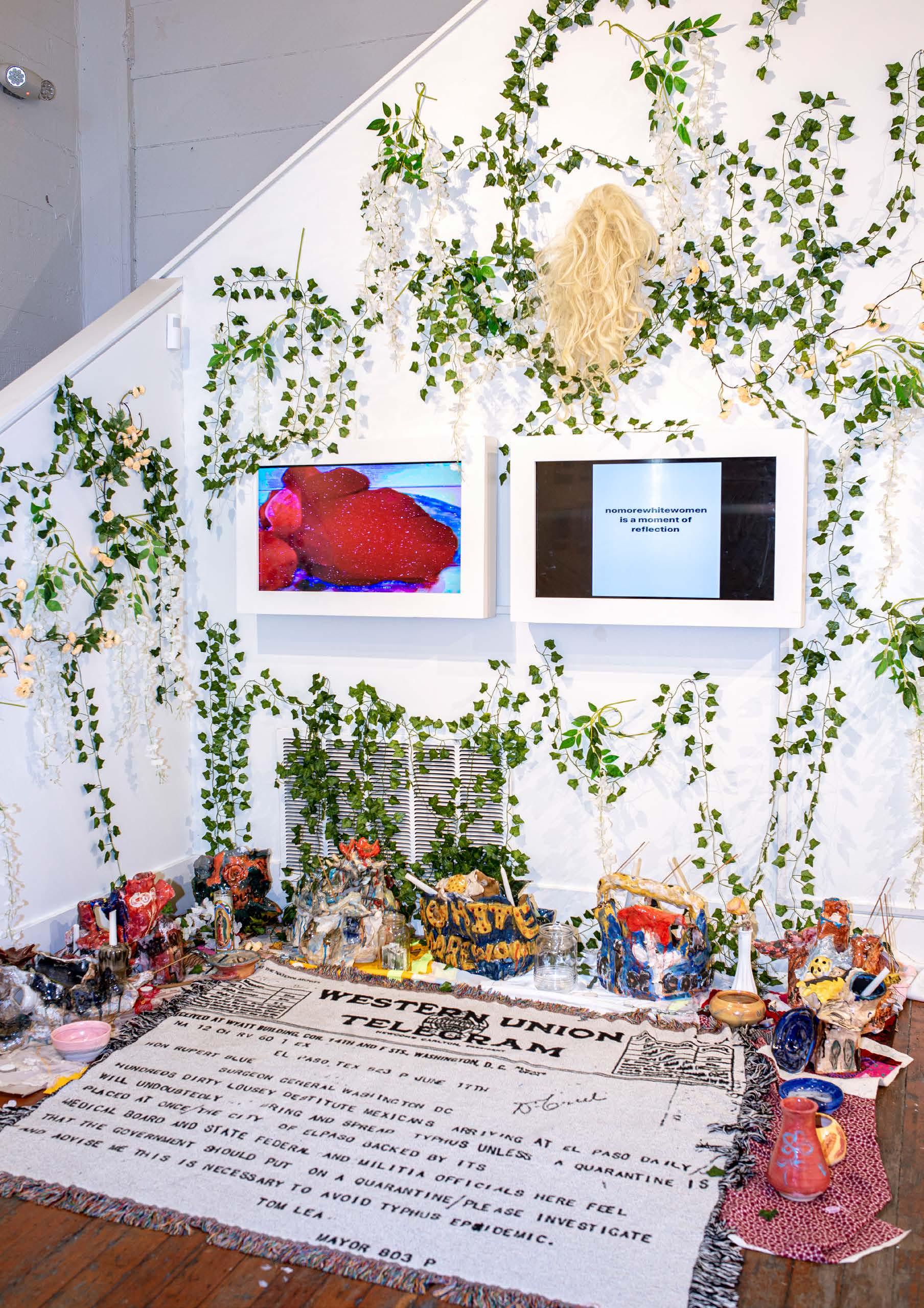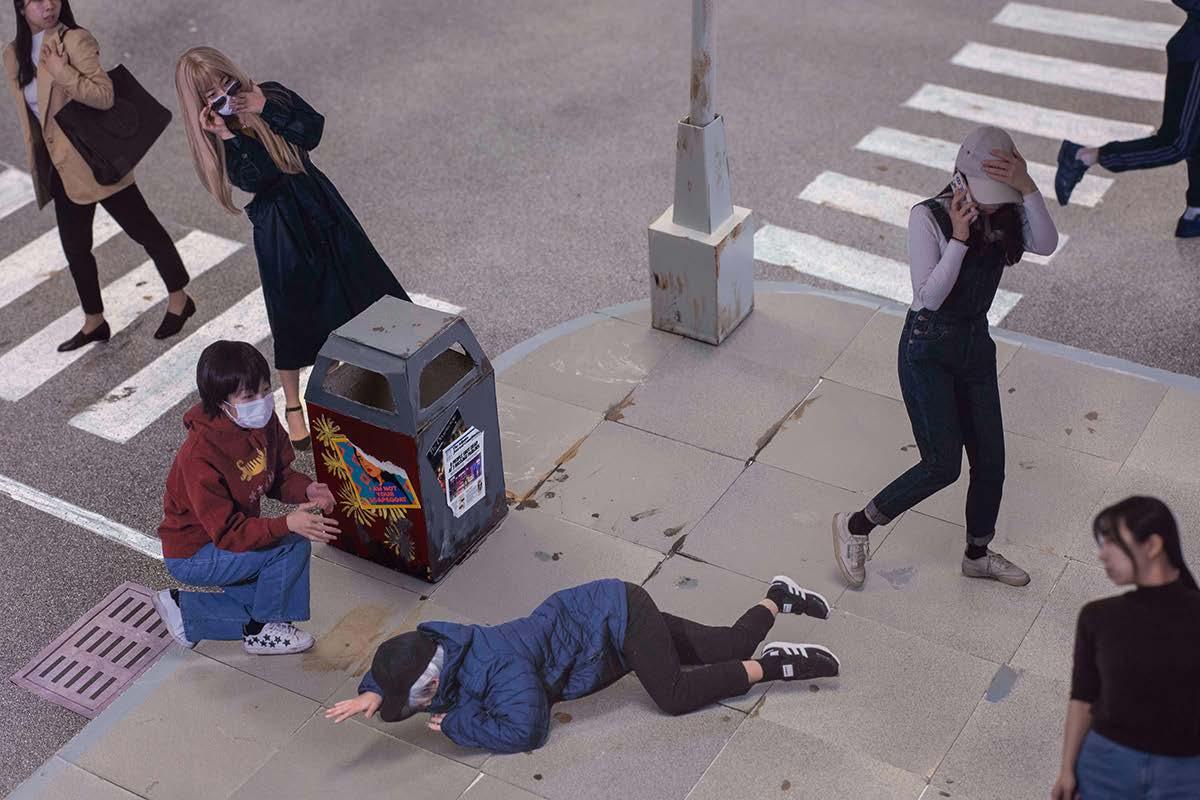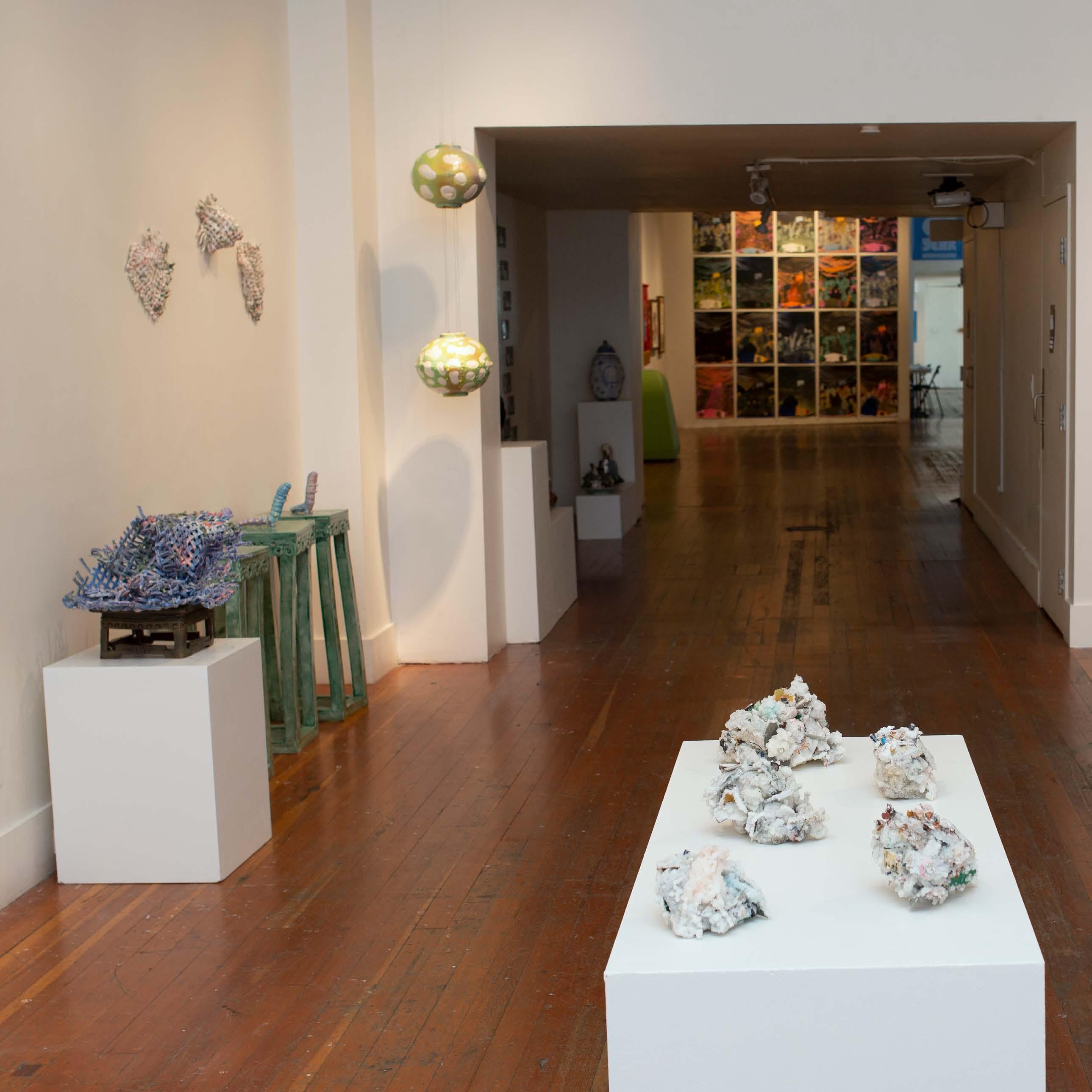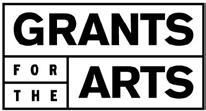Introductions 2022 was presented at Root Division, San Francisco in September 2022 as part of the 2nd Saturday Exhibition Series.
EXHIBITION DATES : JURORS
September 1–23, 2022
:
Lian Ladia Curator, Exhibitions and Programs, The David Ireland House, 500 Capp Street Foundation
Genevieve Quick Interdisciplinary Artist, Arts Writer, Educator Leila Weefur Independent Artist, Writer, Curator
EXHIBITING ARTISTS
:
André Campbell Paola de la Calle Claudia Huenchuleo Paquien Ahn Lee
Viviana Martínez Carlos Kelley O’Leary Sun Park
Helia Pouyanfar Leonard Reidelbach
Victor Saucedo AJ Serrano Selby Sohn Zimo Zhao


Introductions has been a core part of Root Division’s annual Exhibitions programming since 2007. Conceived as an opportunity to bridge a gap left when the San Francisco Arts Dealer Association (SFADA) discontinued their 30-year summer programming of the same name, Introductions has become a mainstay of our roster. This show highlights talent in the Bay Area and creates connections for artists with commercial galleries and beyond.
Root Division acts as a nexus for the production and presentation of visual art. Our goal is to serve as a connector between artists, the larger art community, and the general public. We offer an entry point for artists as they develop and hone their professional practice. Especially as the art community has faced an exodus of artists moving outside San Francisco and to other cities in search of a more sustainable life AND with the reverberation of the hit to the city’s most financially unstable populations due to the COVID-19 pandemic, Root Division is holding course in its position as an anchor for artists to remain in the Bay Area. Celebrating our 20 year anniversary and our seventh year in our 13,000 square foot facility, Root Division continues to be a beacon for the visual arts in our city, especially amidst so much challenge and uncertainty.
Introductions begins each year as an open call to any Bay Area artist whose work is not currently represented by a local gallery. Reviewed by a committee of three arts professionals representing a diversity of commercial, non-profit, and educational venues, the exposure for any submitting artist is invaluable. Each year we are encouraged and impressed by the quality of submissions, and we are surprised by the number of outstanding artists still operating under the radar of commercial representation. Our intent is to capture both the aesthetic and conceptual magic that comes from cultivating this new crop of budding talent.
This year our jurors—Lian Ladia, Genevieve Quick, and Leila Weefur—selected 13 artists through intensive review. In these pages, you will find an essay by Frances Fleetwood (Root Division’s Art Programs Manager) contextualizing the work of each artist and bringing the works into conversation with one another as well as within a larger discourse of art practice. Root Division is happy to provide an opportunity for these artists to add to the conversation of contemporary Bay Area art, especially in assertion that the San Francisco art community has a unique voice. We are proud to debut this group of artists and to support their continued artistic and professional development.
From The Jurors
Curator, Exhibitions and Programs,
The David Ireland House, 500 Capp Street FoundationThere is a meme where a person is continuously bumping into glass walls, hitting their face hard and aching a little more each time. The person in the meme is labeled artist, and the glass wall represents first a BFA, and then—the artist bumping flat faced into the wall again—an MFA. There are steps we take when we take our passions and crafts seriously, whether it be acquiring a fine art degree, getting a studio, applying to grants, or applying to shows. We realize we’ve professionalized our values, and we either critique it, break away, or sell out. There are so many steps in the art world that one can embrace or ignore. The horrid fact is that the system has presented the way of life of an artist, as a hard way of life. Shows like Introductions become platforms for emerging ideas, and in turn are saving graces for artists who have figured something out, and then aim to push their work forward. One thing I considered with the other jurors, apart from creating a platform for new voices from different communities and the rigor needed to survive and pursue, was the idea of embracing risk. Risk makes things real. When viewing art, there is an instant when you gutturally feel the presence of an artwork unfolding in front of you. When the same kind of artist puts risk at play, then it becomes better. The glass wall becomes a breaking point, where cracks become artworks themselves. Nonprofit spaces like Root Division should be celebrated for taking a chance on artists, on the jurors, and the idea of creating opportunities for breaking points. This period is the next breath after that “eureka” moment. It is an honor and pleasure to witness this for each applicant, and each finalist in this exhibition.
As we all know, the high cost of living in the Bay Area exerts tremendous pressures on its residents. With many of us scrambling to make a living wage, it is particularly difficult for those of us who pursue creative endeavors that require time and place, yet yield low financial returns. Nonprofit art spaces, like Root Division, play a crucial role in creating opportunities and space for artists to experiment beyond marketplace demands.
Having endured the personal, social, educational, and economic challenges of the last two years, the artists selected for Introductions display a remarkable tenacity, humor, joy, and curiosity. Rather than attempting to place artists in a neatly defined curatorial proposition, Introductions importantly responds to the many ways in which artists are playing and experimenting, such that artists lead the conversation. As jurors, we have selected a group of artists that engage with a wide range of media, approaches, aesthetics, and ideas to showcase the diversity and vitality within the Bay Area. As these artists expand and develop their individual practices, they contribute to broader cultural dialogues about place and self. In this exhibition we honor their many personal, artistic, and educational journeys and eagerly await to watch them move through their artistic process in the years to come.
Root Division’s annual Introductions exhibition has cast a wide net, capturing generations of Bay Area artists during the most formative periods in their practices. The 2022 artists are evidence of a strong pulse in this corner of the California art world. Despite having endured two of the most challenging years in our history, this group is unafraid and ushers in this year’s exhibition with an assured voice.
As galleries in the Bay Area are battling inflation, dwindling audience participation, and the threat of closures, it is essential to reinforce and reignite the power of emerging artists if only to maintain resilience. As a juror for 2022, I bear witness to a cohort that is sharp and textured and playful and critical—all things I hope never die. At a time when despair seems easier than ambition or hiding feels safer than manifesting, may these artists be a reminder to those who may have forgotten the importance of letting the world become acquainted with your imagination.
Each yearly iteration of Introductions, conceptual and aesthetic themes that link the artists together present themselves; a result of featuring artists all living and creating at the same time and place in history. These artists, like us, are influenced by the same tidal ebbs and flows that are both unique and not unique to this point in time.
Reflecting on the themes and threads that tie this cohort together, I think about how Introductions is a yearly invitation to reflect on where we are; societally, politically, culturally, environmentally. The artists are cultural translators, absorbing all that we have individually and collectively experienced, and sharing it back to us in the form of sculptures, installations, photographs, paintings, video, and other media. The artists share with us their personal stories, community experiences, and global narratives, weaving together a picture of today; a snapshot in time.
As we approach the three year anniversary of a global pandemic, and as the world feels more and more like a dystopian novel, it is no surprise that the works in this show reflect on themes such as xenophobia, immigration, racism, White Supremacy, and the impact of Big Tech on the environment. Interestingly, imagery of plants and flowers, root systems, geological material, and water flow across the gallery, linking artworks despite conceptual differences. This creates a colorful lightness as the artists examine heavier subjects, offering a balance of critique and hope. This natural imagery continues into the materiality of the works; the exhibition features textile pieces woven with natural fibers and dyes, as well as a significant number of ceramic pieces made from clay. When faced with the threat of a dystopian future, turning to imagery and materials of earth and the land feels like an appropriate response from artists.
While many subjects and concepts draw these works together, the word I keep coming back to is movement. I think of the movement of people, past, present and future, across borders and state lines. I think of the pandemic’s impact that has halted our movement, with many of us unable to travel home to see families and loved ones. I think of the way that the movement of Black, Brown, and Indigenous bodies continue to be policed and regulated. I think of the power of political and social justice movements; of people physically and metaphorically marching and moving towards change and progress.
I think of bodily movement, of gesture and action. The volume of ceramics featured in this show and their connection to touch and tactility feels meaningful at this specific point in time when our relationship to touch has been thrown upside down. I think of the physicality and movement of making and creating–the movement of resistance, of dance and joy. I think of being moved by art.
But mostly, I think of the way that these artists represent movement forward. Into an uncertain future perhaps, but the momentum they offer feels grounded in community, creativity, and growth. And who better to lead than artists?
Claudia Huenchuleo Paquien’s intricate woven installation hangs from the ceiling, with light casting an interlaced shadow counterpart behind it. Each tendril is painstakingly woven by hand using sheep’s wool dyed with plants and trees from the archipelago of Chiloé in Chile. The interconnected tendrils allude to root systems, inspired by the metaphor of the tree and the rhizome connected to their surroundings. A tree stump with woven roots and a suitcase handle speaks of grounding, of “home” as something transportable, and of the ability to put down roots in new places. By creating these interconnected
webs, the artist reflects on the complexity of contemporary Indigeneity, of resistance, and of home, and connects with the movement of her ancestors by creating “woven human gestures across hemispheres.”
Also using weaving to connect personal and cultural histories, Ahn Lee’s artworks experiment with form and media. Porcelain weavings hang on the wall with a solidity that defies gravity despite their delicacy; hand-built clay sculptures sit atop one-of-a-kind ceramic pedestals also made by the artist; Celestial Bodies—porcelain orbs infused with the artist’s blood—hang beside them, casting shadows onto the wall behind. Informed by their identity as a queer Cantonese artist and researcher, Lee’s work is supported by a comprehensive body of research on Cantonese history and diaspora, including early immigration to the US, past and present racism and prejudice, themes of “contamination” and “disease”, the history of Chinese silk production, and associated queer histories. Imagery of the processes and materials of silk can be seen in the artist’s ceramic silkworms—each placed throne-like atop their own ceramic pedestal—and in their experiments in porcelain weaving. Utilizing silkworms and methodologies of silk production to explore erased histories, Lee’s ode to silk honors the legacy of the Silk Sisters; women working in the silk industry in early 20th century China who protested against societal norms around marriage, gender, and labor, by forming sisterhoods and refusing to marry. Lee’s porcelain experiments weave together the threads of these histories, of which little evidence remains, and solidifies them into cultural memory.
Kelly O’Leary translates works between media in their installation; their sculptural ether rocks made from discarded electronics are displayed next to detailed drawings of ether fragments. This fits with their practice
of artist-as-researcher, as an archeologist that is constantly excavating, documenting, mapping, and archiving. This body of work is the result of the artist traversing the United States and physically mapping the geographical locations of the internet; something we often think of as only existing in the digital realm but that takes up a huge amount of space in our external environment. Undertaking fieldwork by taking sketches, photographs, and geological samples at each location, the resulting work feels like educational material that might be found in a museum about a past society. The sculptures made of discarded electronics are delicate and sparkly, resembling precious stones and crystals.
Viviana Martinez Carlos is another artist-archivist, combining poetry with photographs that document her movement through urban and natural environments. Her works can be seen as archival footage tracking the movement of the artist, while her poetry moves similarly across the smaller terrain of the photograph; words trace the outlines of plants and objects, and continue from frame to frame linking each individual photograph into one larger work. Martinez Carlos documents her movement as an adult, reflecting on her nomadic childhood. Born and raised in Mexico, her family’s constant movement awoke a curiosity for the artist in the biological and cyclical processes that occur in nature and in the landscape. The poetic narratives she constructs reflect on themes of uprootedness, memory, and mourning.
Paola de la Calle’s multimedia artworks utilize photography, print, textiles and assemblage, to offer rich and colorful reflections on the painful effects that colonization has had on the artist and her family, including political upheaval, immigration, and family separation. Featuring common exports and symbols of her country of origin, such as
bananas, coffee, and cocoa leaves, the artist reflects on her own “cultural elasticity” and on the socio-political relationship between the US and Columbia. Two of the works, Quiero Una Casa (I Want a Home) and Religion, Cafe, Banano (Nos Roban y Regalan Bala), feature a vintage deadstock fabric that was found in de la Calle’s grandfather’s home after his passing. The use of this fabric is symbolic of the years of separation between de la Calle’s undocumented parents and the family they left behind in Colombia. The works have a tactility and movement to them; social security cards are printed onto chiffon which hangs with tassels out of the 2-dimensional work; a handful of cocoa leaves hovers over silver sculptural bullets which protrude from the work. The symbolism and imagery of cultural identity, home, borders, nostalgia, and memory, moves between and across media and materials, reflecting the artist’s attempt to process the geographical and cultural rift between members of her family.
Reflecting on similar themes, Helia Pouyanfar’s architectural sculptures explore the permanently transient state of the refugee body. The artist reflects on her experience as an asylum seeker, poignantly flipping the narrative by placing meaning in the physical structures that make up a home, and making these components transportable. A piece of wall is turned into a backpack, with photos and memorabilia peeking out from inside. A door is put onto wheels, through which one can walk while also taking it from place to place. A tiled bathroom wall with a pipe poking out sits on the floor in the shape of a briefcase with a handle, while a portion of a brick wall sits on wheels with a suitcase handle. All these house structures have wheels and handles so they can quickly be picked up and taken at a moment’s notice.
Victor Saucedo’s multimedia installation calls on viewers to reflect on their relationship to whiteness, as the artist has done. A semi-circle of ceramic works, incense sticks, and jars of water, frame a blanket on the ground, creating an altar to cleanse or be cleansed. The blanket is a recreation of a 1917 telegram sent from El Paso mayor Tom Lea to Surgeon General Rupert Blue, which shows the precursor to the Bath Riots, in which Mexican migrants crossing the
border into the United States refused to submit to offensive immigration policies that included “delousing” “sanitizing” and “disinfecting” the migrants. Viewers are invited to sit on the blanket in front of two monitors which are framed by plastic vines and flowers, and watch Saucedo’s videos; digital dream-like, autobiographical, video journals that touch on themes of power, bondage, and love. Saucedo’s commitment to decolonize their romantic preferences has led to a commitment in art and life to renegotiate their relationship to whiteness, and white women in particular.
Zimo Zhao’s striking photographs walk the line between hyperreal and imaginary. Spending countless hours during the pandemic consuming copious amounts of news articles, the artist creates reconstructions of traumatic social events that focus on violence against Asian people. As an International student studying in the US during the pandemic, Zhao reflects on her position as an outsider who feels isolated and disconnected from others, and also as someone who is acutely at risk. Zhao creates miniature 3D models of scenes based on specific news articles, photographing herself in various poses and inserting those photographs into the scene. In doing so, she experiments with playing different roles within these events, providing a form of psychological processing and catharsis. She then photographs the 3D model, so we are met with an image that is incredibly detailed and realistic, while also noticeably flat and compressed. Working on these reconstructions allows the artist to connect to ideas of empathy and intimacy.
AJ Serrano uses humor and playfulness in their multimedia installation. Utilizing video and ceramics, the artist explores their experiences as a queer self-taught Mexican American artist, born and raised in the Bay Area. In his video, A f@**** grows in richmond, Serrano’s face overlays footage of the artist traversing Richmond, documenting the changing landscape and environmental racism experienced by the predominantly Black and Brown communities that live there. Flowers pop up and slowly begin to cover the artist’s face, bringing a colorful flamboyance as the “f@****” listed in the title grows and flourishes. Exhibited alongside the video is an impressive array of ceramics:
local Richmond street signs that frame the projected video and that hold a particular sentimentality to the artist; a pair of plates, Bowls of empirical trade, featuring goods and concepts exchanged in transatlantic trade; a series of autobiographical ceramics as part of Queer life in blue and white that include a vase with autobiographical paintings and a ceramic dildo; and A fatal attraction to cuteness, or, how im learning to love this fat body of mine, a body of work whose title says it all.
Leonard Reidelbach’s large scale installation brings 20 individual multimedia prints together to create one imposing installation that can be viewed in full from the opposite end of the gallery. The artist’s imagery is layered and abstracted. Using several template images based on scenes from gay nightlife as a starting point, Reidelbach creates a myriad of iterations with varying highlights and focal points. Each individual print feels the same yet different. Their installation in grid form offers a window view into prospective realities—a vision of a number of “couldbe’s” that arise from the same starting situation. Standing in front of the installation feels like standing at the beginning of a queer “choose your own adventure” experience, faced with windows and pathways into different possible futures. Imagery of water flows between and across the prints representing the fluidity of change and cyclical repetition. By creating variations in motifs and repeating patterns, Reidelbach engages an infinite potential of past and future realities.
In Shape of Belonging, Sun Park offers us a new iteration of a performance for Introductions involving a ritual created for people who have left a religious community or who have had a major shift in their relationship with their religious community. An open call ahead of the exhibition invited participants to respond to poetic prompts, and guided by their answers the artist made a small cup for each person to drink a small sip of a special drink of their choice at the opening reception. Park invites participants to consider how it feels to detach from community, and to find a new sense of belonging. While this new iteration of the performance was premiered at the opening reception, a trace of the performance remains behind in the form of the
cups, bringing the presence of each participant and their personal reflections into the gallery for the remainder of the exhibition.
Also reflecting on themes of belonging, André Campbell’s vibrant joyful paintings are visually and stylistically dynamic. Set against textured colorful backgrounds, the artist features young Black girls dancing, jumping rope, and doing ballet. All of Campbell’s figures are portrayed identically, as Black figures that are featureless except for their Mickey (or Mini) Mouse-like ears. In a simple yet moving way, the artist shows Black joy while highlighting spaces where Black people have been historically excluded. In Untitled, five Black figures hold hands and dance joyfully in a circle. Drawing a reference to Matisse’s Dance, the artist simultaneously suggests the absence of Black people in Art History and the presenting institutions and museums.
Selby Sohn’s fun and curious photographs document the artist in playful poses. The images leave the viewer with questions, while admiring the aesthetic form and framing of the body in space. Sohn’s self-portrait Long Arms, unsurprisingly features the artist with impractically long arms; in The Centaur the artist is photographed laying atop a green mound sculpture which is also installed on the floor in front of the image, translating their work between media in the same space. Sohn plays with concepts of utility by creating objects and situations that are practically purposeless. In doing so, they critique the concept of solutionism, that every problem must have a solution and ideally a capitalist product to fix it. Ironically, the artworld gives value to many (art) objects that are useless in a practical sense (including these ones).
Offer, 2021 Acrylic on canvas 48 x 36 in.
Black Swan, 2022 Acrylic on canvas 48 x 36 in.


Pastime, 2021 Acrylic on canvas 48 x 36 in.


Fin de Semana (The Weekend), 2022 Printed satin with embroidered beads 36 x 24 in.

Homenaje A Joaquin Guillermo (An Ode to Billy), 2021 Assemblage with embroidery 28 x 35 in.

Religion, Cafe, Banano (Nos Roban y Regalan Bala), 2021 Assemblage on unprimed canvas and deadstock fabric with embroidery 27 x 24 in.

Quiero Una Casa (I Want a Home), 2022 Printed cotton and chiffon on unprimed canvas with deadstock fabric and gold buttons 28 x 22 in.


